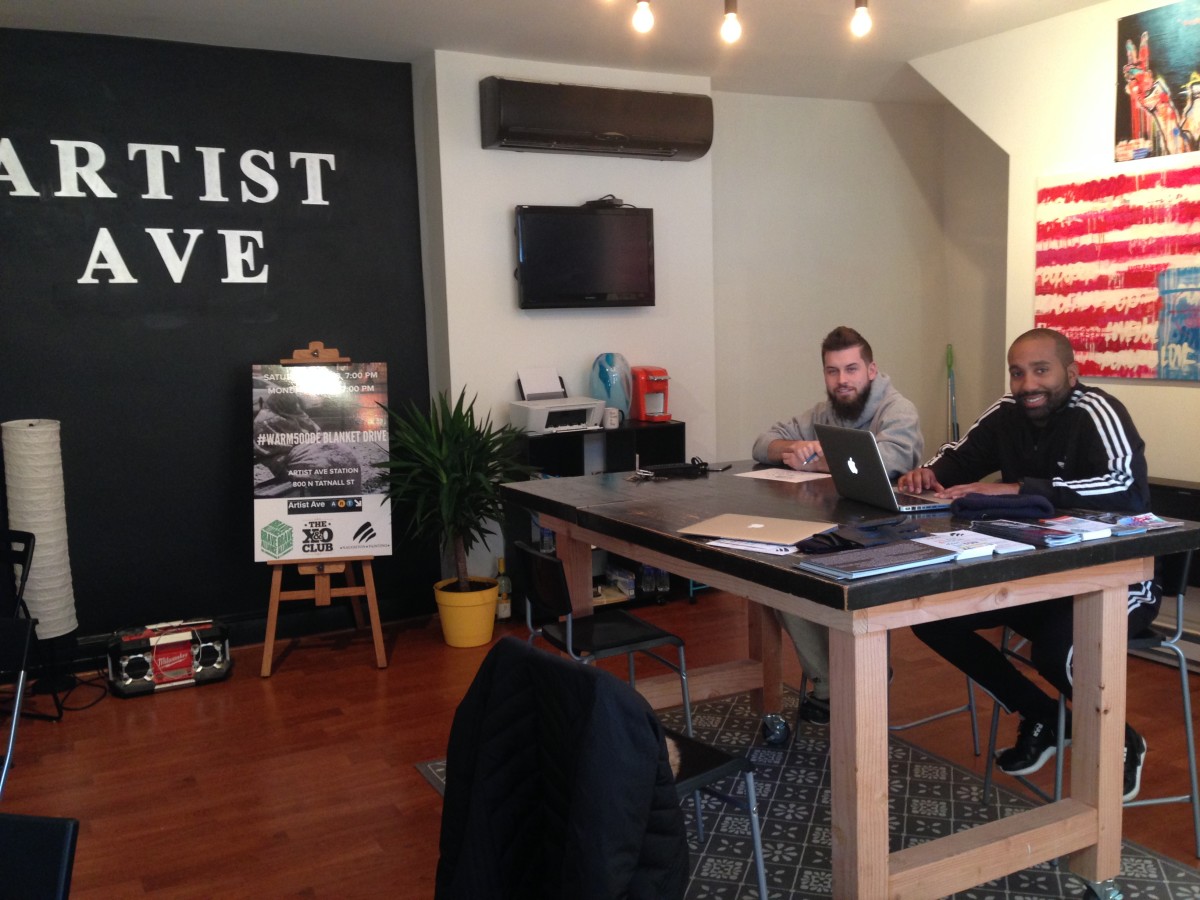The fourth edition of the Baltimore Hackathon rolled into the Digital Harbor Foundation Tech Center over the weekend, with 125 participants and bigger prize money and stuff to hack on from Under Armour, the Mayor’s Office of Information Technology (MOIT) and Stanley Black & Decker.
We stopped by during the final hours for demos, and got to see a smart rain barrel (which is going in Shea Frederick’s yard). And don’t forget the motorized longboard powered with a 3D-printed remote:
Here are the projects that won:
1. createAchimera — Seafarer’s Choice (Team)
This app from Digital Harbor Foundation Outreach Coordinator Kathleen Mazurek and student Bella Palumbi looks to help students resolve conflicts. Using a tablet or phone, the students identify their feelings. The students then choose a solution, encouraging them to begin to work together on resolution.
2. NatureCoders — MOIT Prize (Individual)

This project from Digital Harbor Foundation student Claire Smith looks to help elementary and middle school students to code. Smith 3D-printed a lightning bug figure, and created a kit that helps students code the lightning bug so it lights up. In coding the project, she timed it with the tempo of the light of a real lightning bug. It’s designed to teach students coding, and connect students to the natural world, Smith said.
3. Worm LiDAR — (Hardware Project, Team)
The team of Max Corbin and Nick Durland sought out to do 3D imaging with cheap parts. They ended using a laser range finder, 3D-printed parts of a gimbal, an arduino and a host of other parts to build their device. They got it to work. Here’s an image of a basketball hoop in the DHF gym:

4. Armchair — Wearable Project (Team)

This team tackled accessibility through motorized wheelchairs. Though increasing independence, the wheelchair still requires a person to be able to operate a control stick, which is a problem for people who have limited range of motion in their hand, or are missing their arm or hand. This project removes that necessity by using a Myo Gesture Control Armband to control the wheelchair.
Luke Samuels, Josh Ziggas and Joshua Skillman set up a system where the Myo sends commands to a Raspberry Pi, which in turn sends commands to an Arduino that operates servos mounted on the wheelchair’s control stick.
5. Controlling Wearable LEDs With Your Mind! — Wearable Project (Individual)

Ken Cracraft’s projects features a headset that sends signals to Flora LEDs sewn into a shirt. The headset can intrepret brainwaves that light up the LEDs based on whether a person feels relaxed (green), or focused (red). (During the presentation, Cracraft said he was suprised to be picking up any green. We know how he feels.) Cracraft said signals sent from the brain are subtle, making them challenging to pick up in an environment like DHF, where a lot of other signal noise was happening.
6. Income Explorer — Seafarer’s Choice (Individual)
Following up his win at HopHacks the weekend before the Baltimore Hackathon, Ryan J. Smith once again took home a hackathon prize with Income Explorer. He built on his HopHacks project, The Baltimore Tax Credit Map, which maps income levels and location. Smith built maps for three levels: the city and county, and the entire metro region.
7. DigiFab — Hacker’s Choice (Participants’ vote)
Students at Digital Harbor Foundation created a sign made with 3D-printed objects. Along with lighting up, the sign outputs data about the projects made using DHF’s 3D printers. For instance, the 169,518 grams of filament printed is the equivalent of 1.87 baby elephants. It’s going up in the Tech Center:








